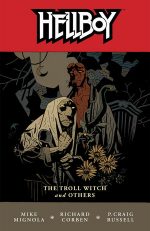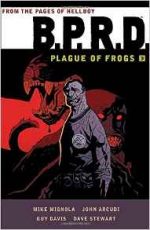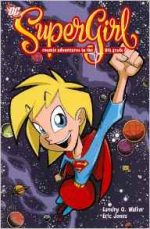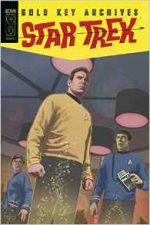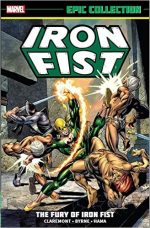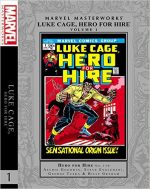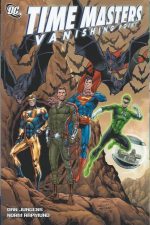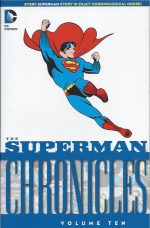
By Jerry Siegel & Joe Shuster, John Sikela, Leo Nowak, Ed Dobrotka, George Roussos, Jack Burnley, Fred Ray & various (DC Comics)
ISBN: 978-1-4012-3488-1
Without doubt the creation of Superman and his unprecedented adoption by a desperate and joy-starved generation quite literally gave birth to a genre if not an actual art form.
Within three years of his Summer 1938 debut, the intoxicating mix of eye-popping action and social wish-fulfilment which hallmarked the early exploits of the Man of Tomorrow had grown to encompass cops-and-robbers crime-busting, reforming dramas, science fiction, fantasy and even whimsical comedy, but once the war in Europe and the East snared America’s consciousness, combat themes and patriotic imagery dominated most comicbook covers if not interiors.
In comic book terms at least Superman was master of the world, and had already utterly changed the shape of the fledgling industry. There was the popular newspaper strip, a thrice-weekly radio serial, games, toys, foreign and overseas syndication and the Fleischer studio’s astounding animated cartoons.
Thankfully the quality of the source material was increasing with every four-colour release and the energy and enthusiasm of Jerry Siegel & Joe Shuster had informed and infected the burgeoning studio that grew around them to cope with the relentless demand.
Superman was definitely every kid’s hero, as confirmed in this classic compendium, and the raw, untutored yet captivating episodes reprinted here had also been completely embraced by the wider public, as comicbooks became a vital tonic for the troops and all the ones they had left behind…
I sometimes think – like many others I know – that superhero comics were never more apt or effective than when they were whole-heartedly combating global fascism with explosive, improbable excitement courtesy of a myriad of mysterious, masked marvel men.
All the most evocatively visceral moments of the genre seem to come when gaudy gladiators soundly thrashed – and I hope you’ll please forgive the offensive contemporary colloquialism – “Nips and Nazisâ€.
However, even in those long-ago dark days, comics creators were wise enough to offset their tales of espionage and imminent invasion with a barrage of home-grown threats and gentler or even more whimsical four-colour fare…
This tenth astounding Superman chronological chronicle – collecting #18-19 of his solo title, episodes from flagship anthology Action Comics #53-55 and the Man of Steel segment of World’s Finest Comics #7 (covering September to December 1942) – sees the World’s Premier Superhero pre-eminent at the height of those war years: a vibrant, vital role-model and indomitable champion whose sensational exploits spawned a host of imitators, a genre and an industry.
Behind the stunning covers by Jack Burnley and Fred Ray – depicting our hero smashing scurrilous Axis War-mongers and reminding readers what we were all fighting for – scripter Siegel – who authored everything in this volume – was crafting some of the best stories of his career, showing the Action Ace in all his morale-boosting glory; thrashing thugs, spies and masters of Weird science whilst America kicked the fascist aggressors in the pants…
Co-creator Joe Shuster, although plagued by punishing deadlines for the Superman newspaper strip and rapidly failing eyesight, was still fully involved in the process, overseeing the stories and drawing character faces whenever possible, but as the months passed the talent pool of the “Superman Studio†increasingly took the lead in the comicbooks as the demands of the media superstar grew and grew.
Thus most of the stories in this volume were illustrated by studio stalwarts John Sikela, Leo Nowak and Ed Dobrotka with occasional support from others…
The debut of Superman had propelled National Comics to the forefront of the fledgling industry. In 1939 the company collaborated with the organisers of the New York World’s Fair: producing a commemorative comicbook celebrating the opening. The Man of Tomorrow prominently featured on the appropriately titled New York World’s Fair Comics beside such four-colour stars as Zatara, Gingersnap and The Sandman.
He starred again a year later in the sequel issue with newly-launched Batman and Robin in another epochal mass-market premium – World’s Fair 1940.
The monolithic 96-page card-cover anthologies were a huge hit and convinced National’s Powers-That-Be to release a regularly scheduled over-sized package of their pantheon of characters, with Superman and Batman prominently featured.
The bountiful format was retained for a wholly company-owned quarterly which retailed for the then-hefty price of 15¢. Launching as World’s Best Comics #1 (Spring 1941), the book transformed into World’s Finest Comics from #2, beginning a stellar 45 year run which only ended as part of the massive decluttering exercise that was Crisis on Infinite Earths.
Here – illustrated by Nowak & Sikela – the thrills begin with ‘The Eight Doomed Men’ (World’s Finest Comics #7); a tale involving a coterie of ruthless millionaires targeted for murder because of the wicked past deeds of their privileged college fraternity. This enthralling crime mystery is suitably spiced up with flamboyant high-tech weaponry that pushes the Action Ace to his limits…
Superman #18 (September/October 1942) then offers a quartet of stunning sagas, leading with the all-Sikela’s ‘The Conquest of a City’ wherein Nazi infiltrators used a civil defence drill to infiltrate the National Guard and conquer Metropolis in the Fuehrer’s name until Superman spearheads the counter-attack, whilst in Nowak’s ‘The Heat Horror’ an artificial asteroid threatens to burn the city to ashes until the Metropolis Marvel defeats Lex Luthor, the manic mastermind who aimed it at Earth.
‘The Man with the Cane’ offers a grand, old-fashioned and highly entertaining espionage murder mystery for Ed Dobrotka & Sikela to illustrate after which Superman takes on his first fully costumed super-villain after ‘The Snake’ perpetrates a string of murders during construction of a river tunnel in a moody masterpiece drawn by Nowak.
Sikela is inked by George Roussos on fantastic thriller ‘The Man Who put Out the Sun!’ from Action Comics #53, wherein bird-themed menace Night-Owl uses “black light†technology and ruthless gangsters to plunder at will until the Man of Steel takes charge, whilst in #54 ‘The Pirate of Pleasure Island!’ (Sikela) follows the foredoomed career of upstanding citizen Stanley Finchcomb, a seemingly civilised descendent of ruthless buccaneers, who succumbs to madness and becomes a modern day merciless marine marauder. Or perhaps he truly was possessed by the merciless spirit of his ancestor Captain Ironfist in this enchanting supernatural thriller…?
A classic (and much reprinted) fantasy shocker opened Superman #19. ‘The Case of the Funny Paper Crimes’ (by Sikela & Dobrotka) saw bizarre desperado Funnyface bring the larger-than-life villains of the Daily Planet’s comics page to terrifying life in a grab for loot and power, after which ‘Superman’s Amazing Adventure’ (Nowak) finds the Man of Tomorrow battling incredible creatures in an incredible extra-dimensional realm – but all is not as it seems…
Some of the city’s most vicious criminals are commanded to kill a stray dog by the infamous Mr. Z in ‘The Canine and the Crooks’ (Nowak) and it takes all of Clark and Lois Lane‘s deductive skills to ascertain why before ‘Superman, Matinee Idol’ breaks the fourth wall for readers as the reporters visit a movie house to see a Superman cartoon in a shameless but exceedingly inventive and thrilling “infomercial†plug for the Fleischer Brothers cartoons then currently astounding movie-goers; all lovingly rendered by Shuster and inked by Sikela.
This latest leaf through times gone by concludes with a witty and whimsical Li’l Abner spoof illustrated by Sikela & Dobrotka. ‘A Goof named Tiny Rufe’ focuses on desperate cartoonist Slapstick Sam who plagiarises – and ruins – the simple lives of a couple of naïve hillbillies to fill his idea-empty panels and pages until Superman intercedes to give the hicks their lives back and the devious dauber the drubbing he so richly deserves……
Although the gaudy burlesque of evil aliens, marauding monsters and slick super-villains still lay years ahead of Superman, these captivating tales of villainy, criminality, corruption and disaster are just as engrossing and speak powerfully of the tenor of the times.
Most importantly all problems are dealt with in a direct and captivating manner by our relentlessly entertaining champion in summarily swift and decisive fashion. No “To Be Continueds…†here!
As fresh, thrilling and compelling now as they ever were, the endlessly re-readable epics re-presented here are perfectly presented in these glorious paperback collections where the graphic magic defined what being a Super Hero means and with every tale defined the basic iconography of the genre for all others to follow.
These Golden Age tales are priceless enjoyment at absurdly affordable prices and in a durable, comfortingly approachable format. What dedicated comics fan could possibly resist them?
© 1942, 2012 DC Comics. All Rights Reserved.


